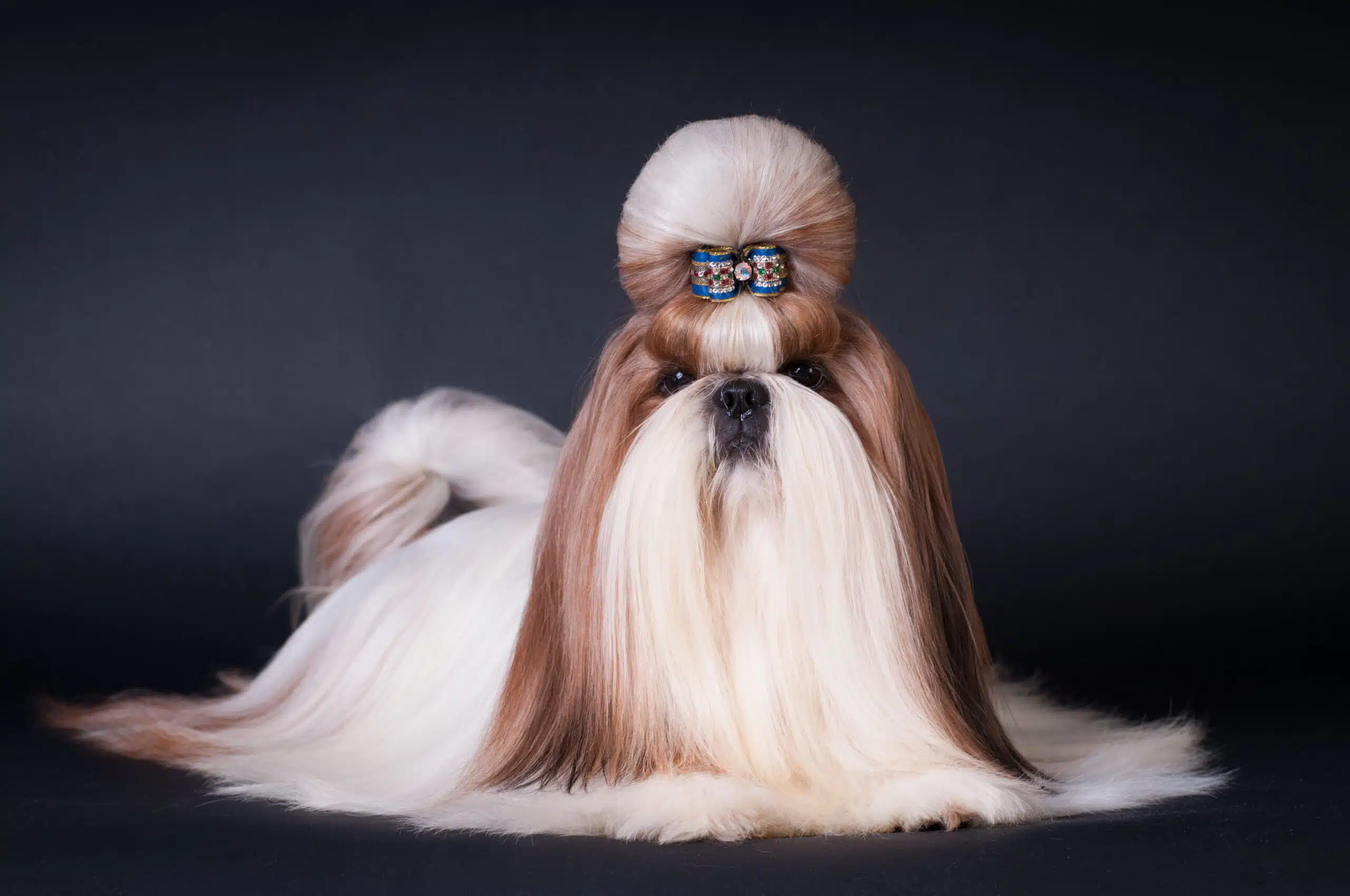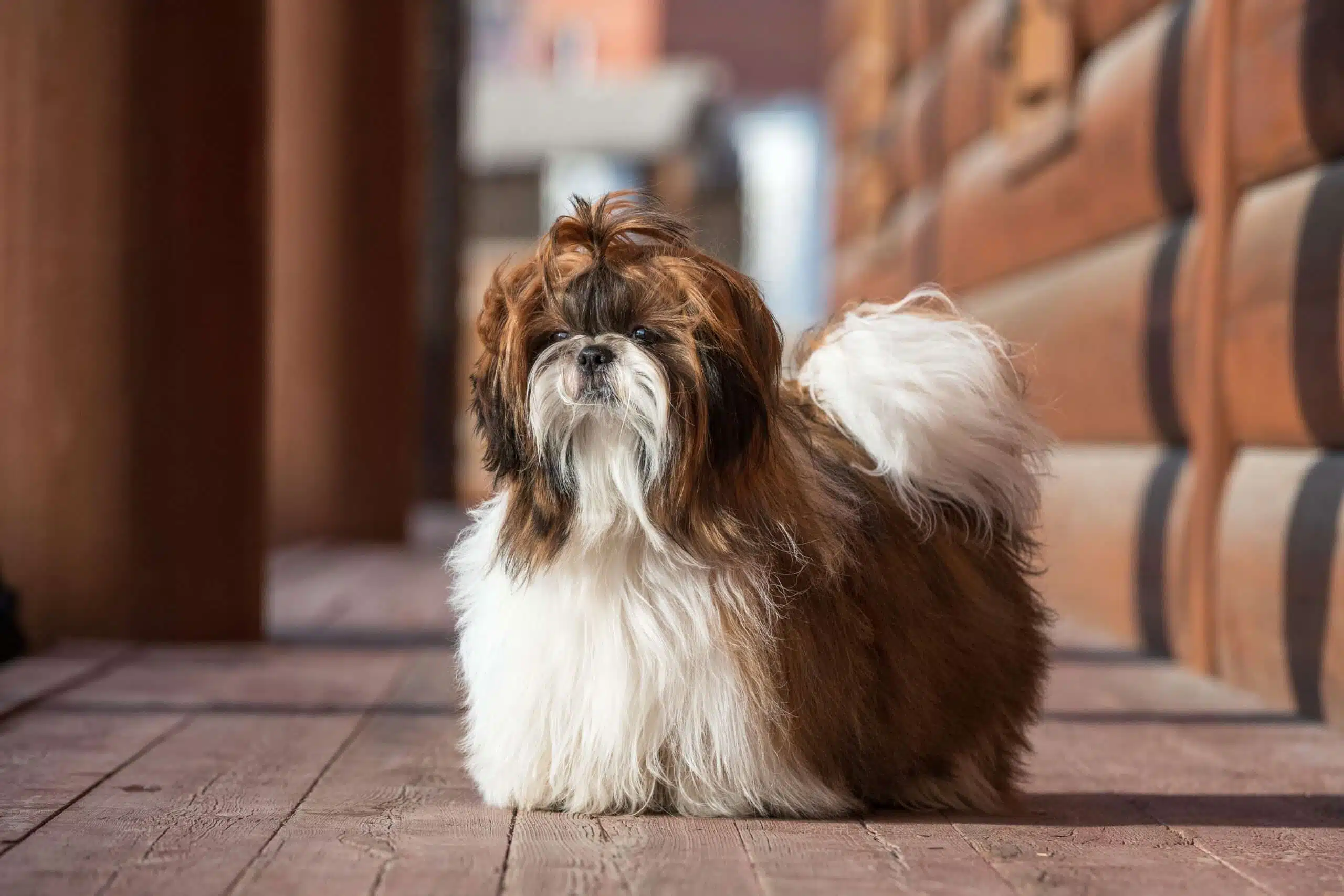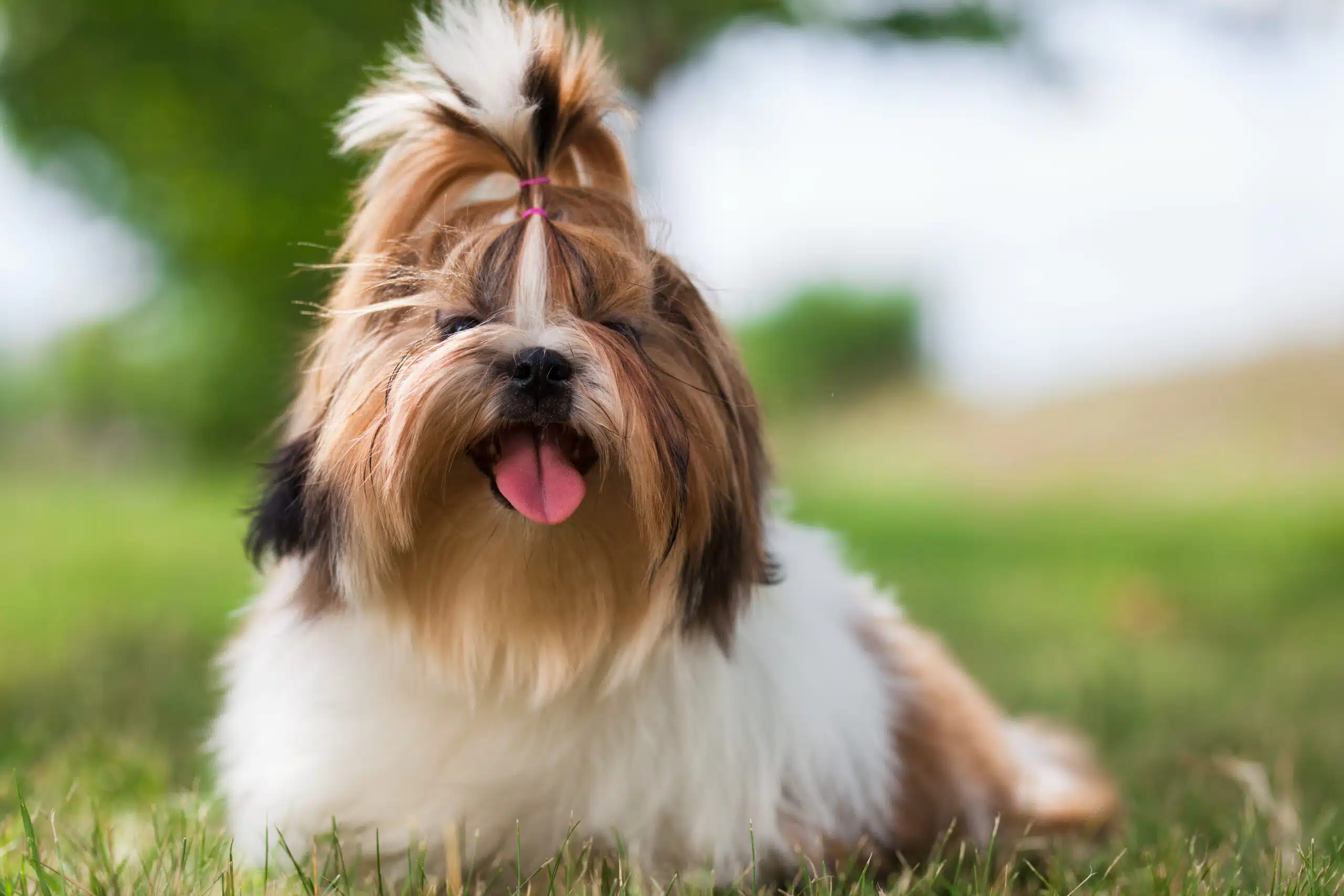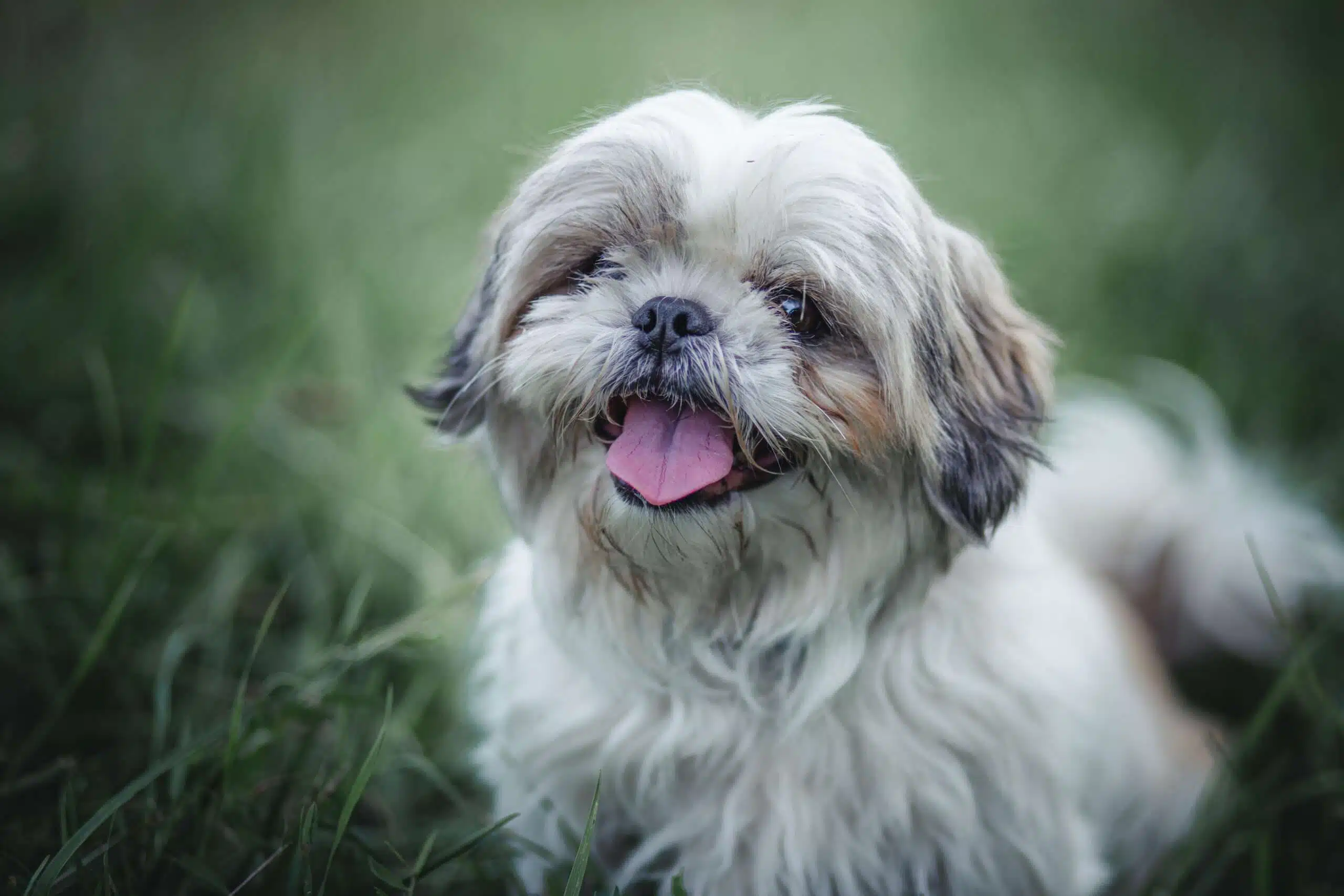Shih Tzu

While not much is known about the beginning of this particular breed, genetic testing has revealed that he’s one of most ancient breeds in existence. It’s believed that the Shih Tzu was birthed in Tibet by Tibetan lamas as a mini version of a lion- an animal heavily connected with Buddhist mythology. Distinguished for his thick coat and tail curving over his back, these tiny little ones were often used as companions and watchdogs to monks within lamaseries.
The Shih Tzu is an affectionate and loyal dog that loves being close to its people. However, because of their clingy nature, owners should be extra careful not to step on them by accident when they are around. These little fellows adore strangers as much as familiar faces and may bark at first but quickly settle in a stranger’s lap if given the chance! Not only do they get along well with children, but some individuals also have incredibly friendly relationships with cats – although this is mostly dependent on the temperament of each particular dog.
An exceptionally adaptable apartment dog, he will thrive in any living environment from lavish mansions to rural farms. The Shih Tzu, though often demanding attention and pampering as if the world were built for him, is one of the gentlest toy breeds – making them justifiably popular. His sweet personality complements his remarkable ability to adapt in any environment with an unexpected lack of arrogance or aggression.
Shih Tzus aren’t known for their hunting and guarding capabilities, but they do have an affinity for retrieving balls that you can play with them. What makes them incredibly special is the unconditional love they offer all of us; these fluffy companions are designed to fit perfectly in your lap – nothing more, nothing less. They truly know how to spread joy and receive it back tenfold!
Shih Tzus are highly intelligent dogs and excel in learning. These canines perform brilliantly in obedience classes – so much that they may even be able to take part in agility or obedience competitions! While these pups do require more time during training, housebreaking is another problem altogether; yet with your patience and consistency, this obstacle should not prove too difficult to surmount.
Providing a daily stroll is essential for the health and wellbeing of your Shih Tzu, but even if you can’t manage to do that, they are happy enough with running an obstacle course around the furniture.
The colors of this breed range from dazzling gold and white to classic black and white, with additional varieties including red and white, solid red, solid black, liver and white, blue and white, brindle and white as well as silver-white.
The Shih Tzu’s long hair needs considerable grooming, so daily brushing and combing is essential to keep its coat tangle-free. A weekly bath is also advisable for optimal results. If you find the routine too challenging to maintain, occasionally clipping the dog’s fur every 6 – 8 weeks may be an ideal approach instead; it enables a neat look while keeping their face looking clean! As puppies, their coat is significantly different from the adult silky one. Around 10 months up to a year old, they enter into this transition period that can last for approximately 3 months and be very demanding. But once it’s over brushing and combing will become much simpler!
- Group AKC Toy
- Origin China
- Size Smallest
- Weight 9 to 16 pounds
- Coat Length Long
- Coat Type Double
- Colors Black,Blue,Brindle,Gold,Liver,Red,Silver
- Other Names Chinese Lion Dog, Chrysanthemum Dog
- Temperament Active,Courageous,Friendly,Gentle,Happy,Intelligent,Lively,Outgoing,Playful





